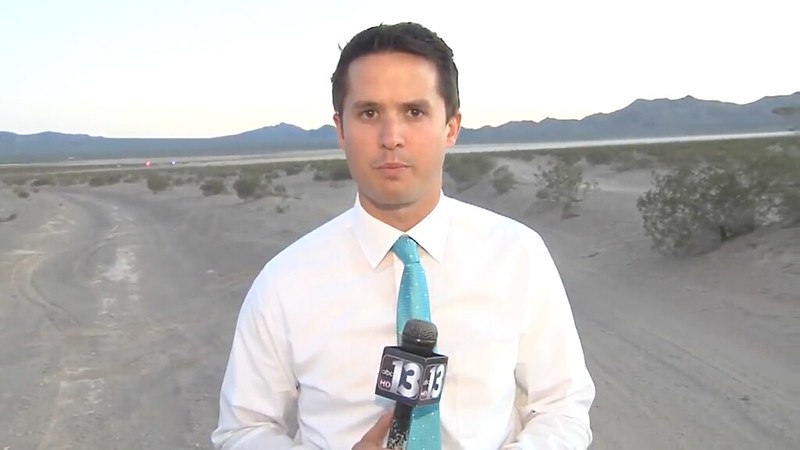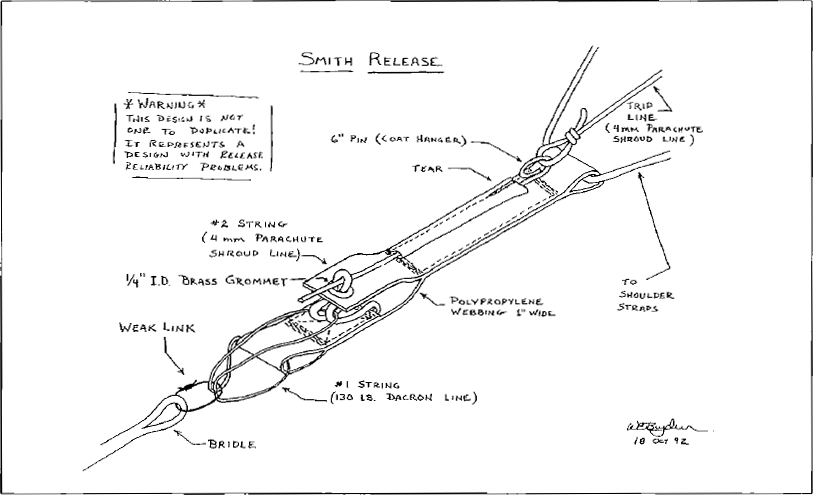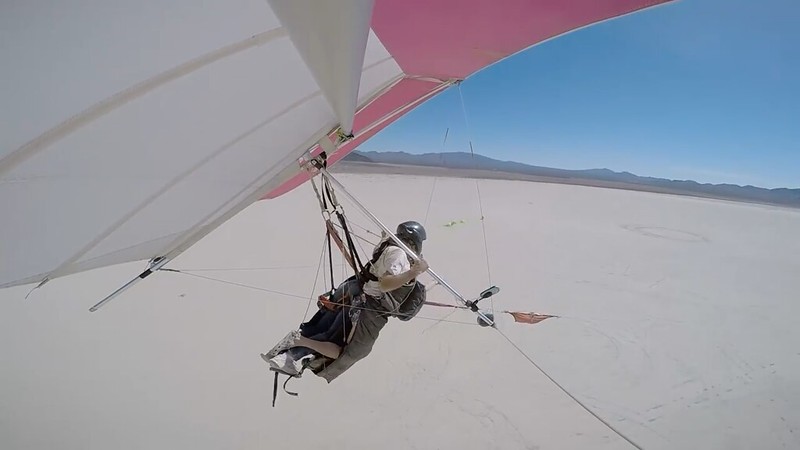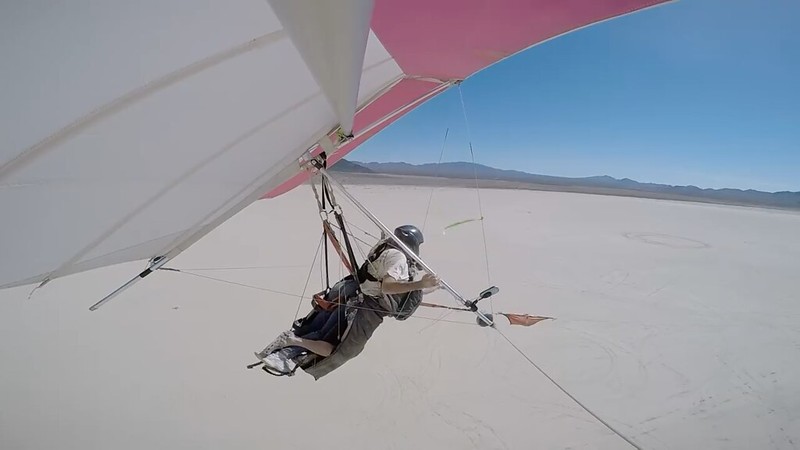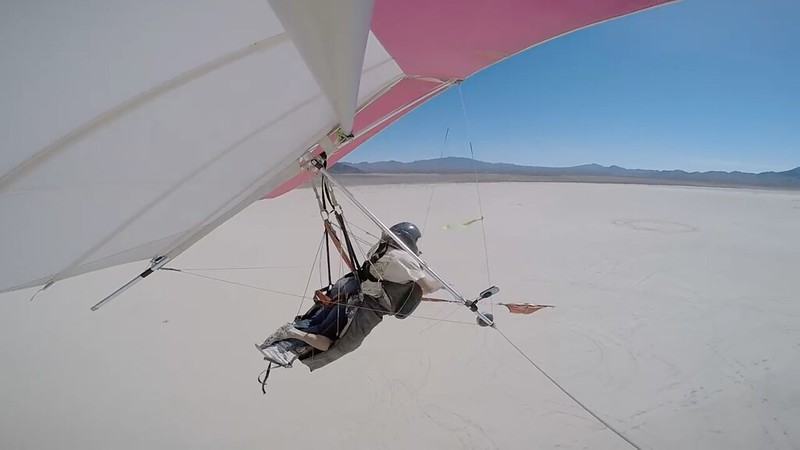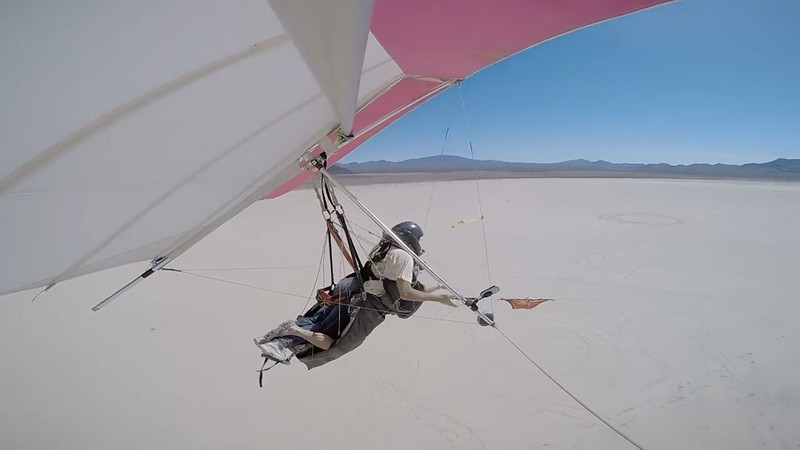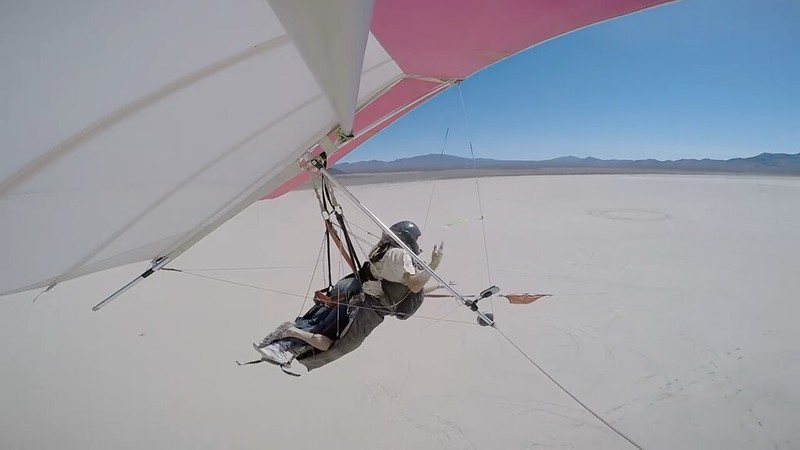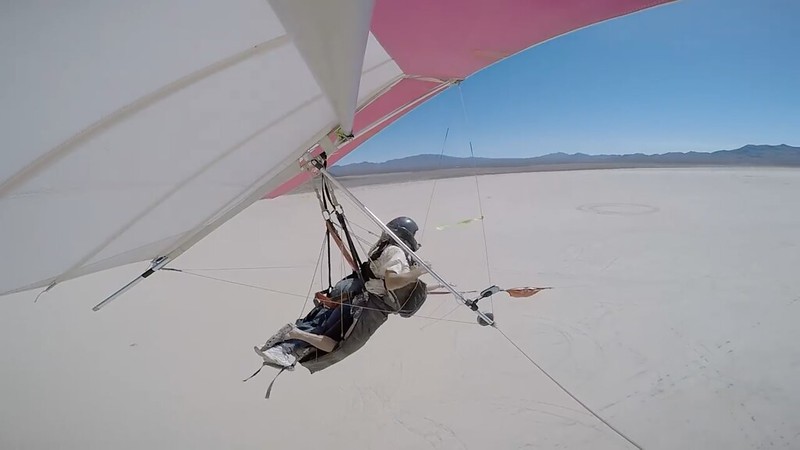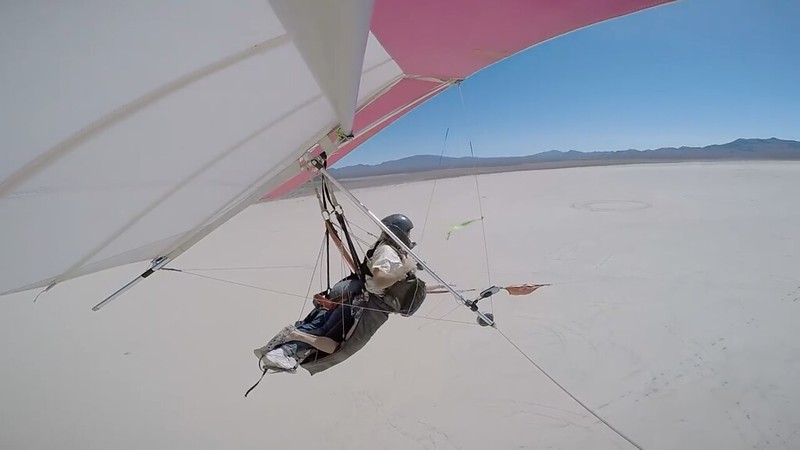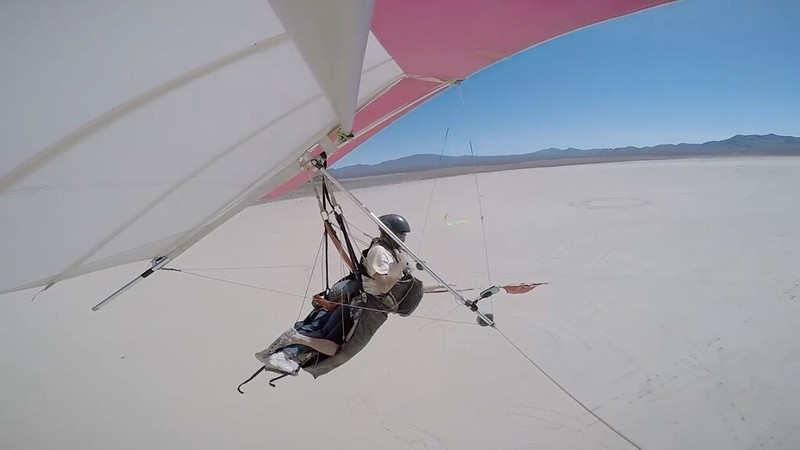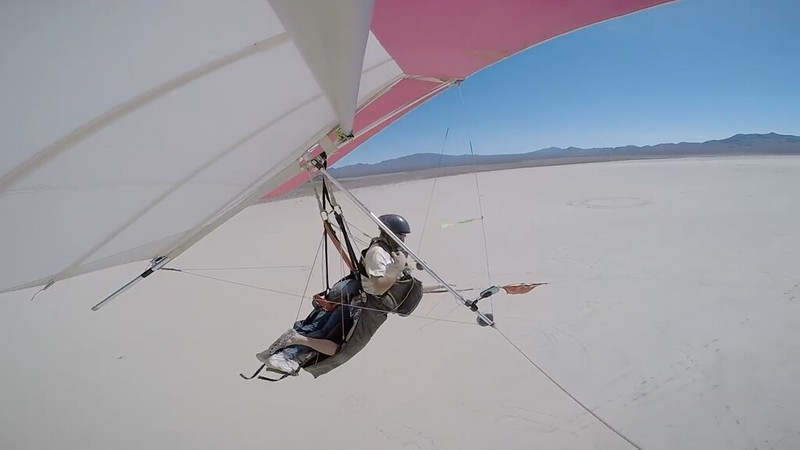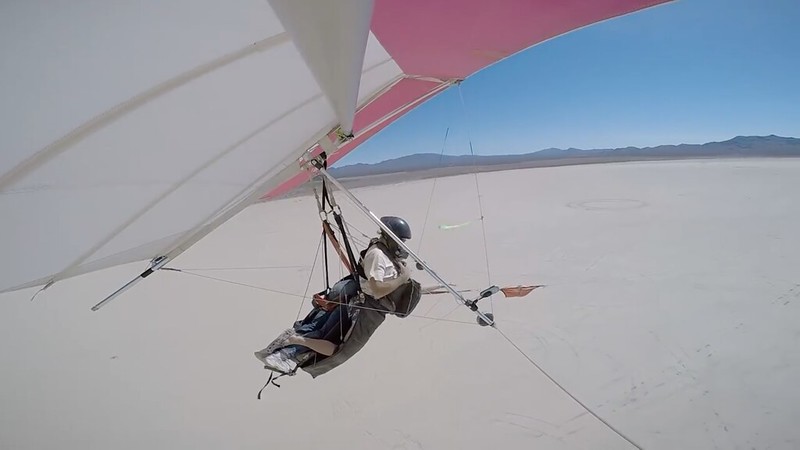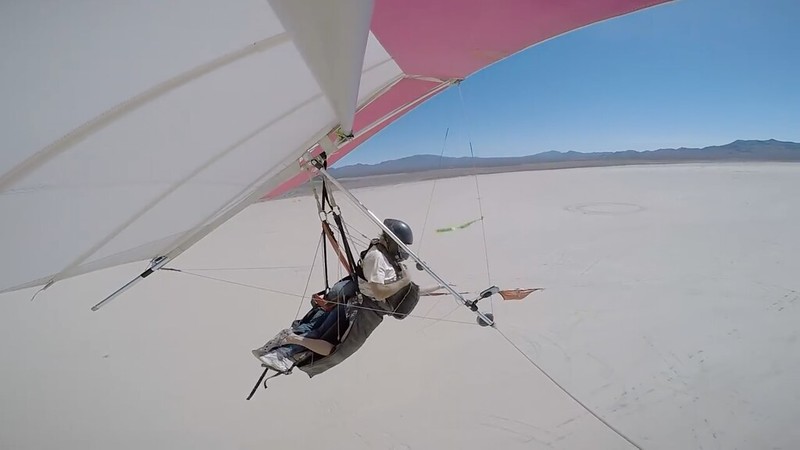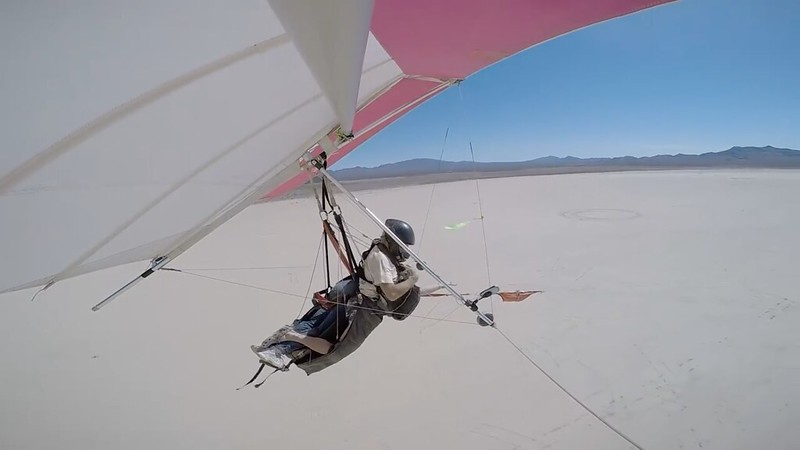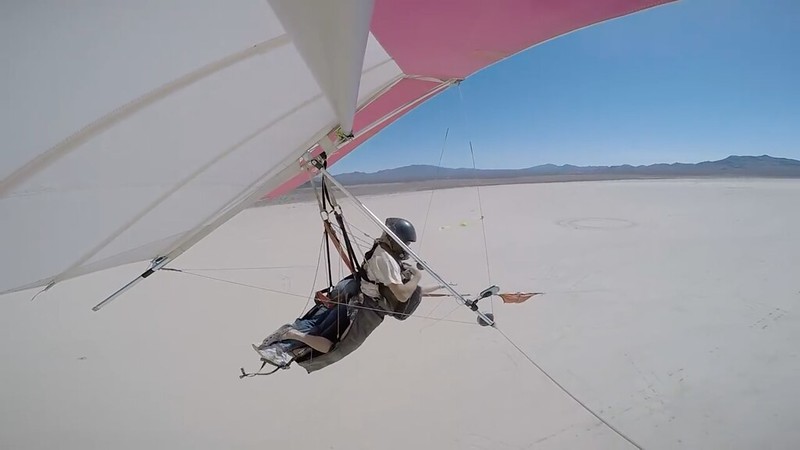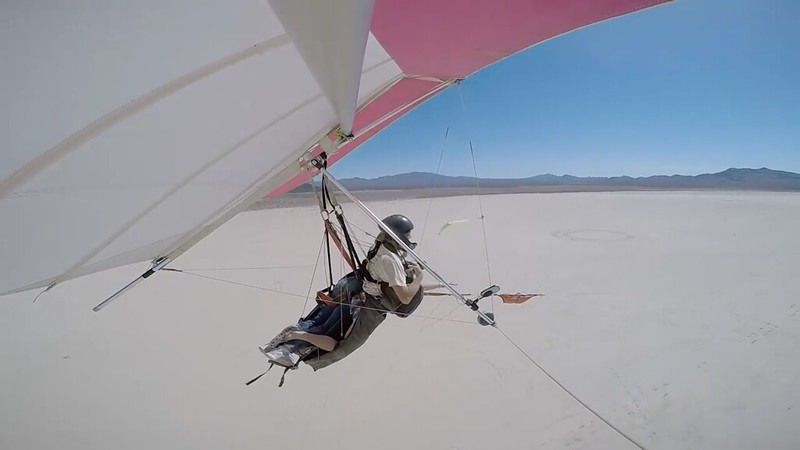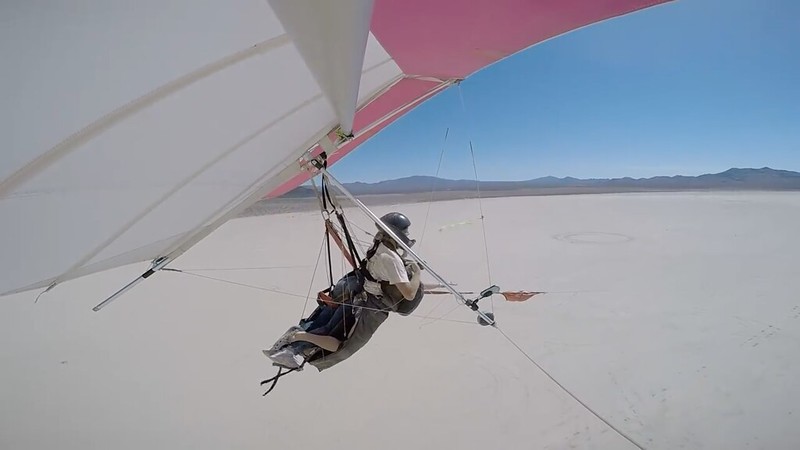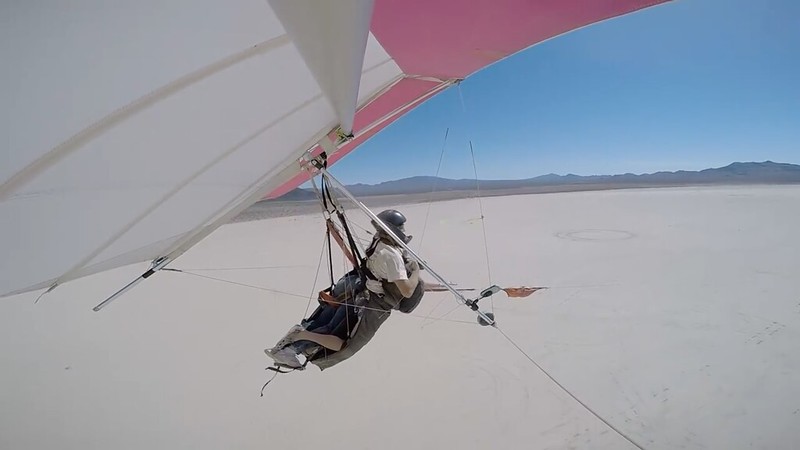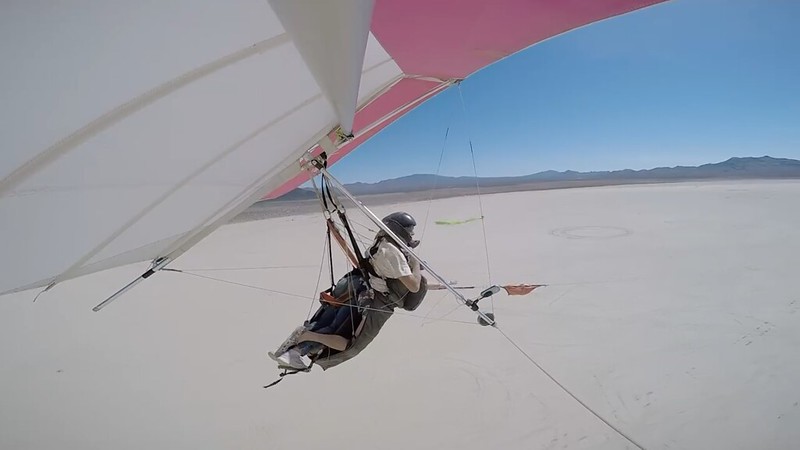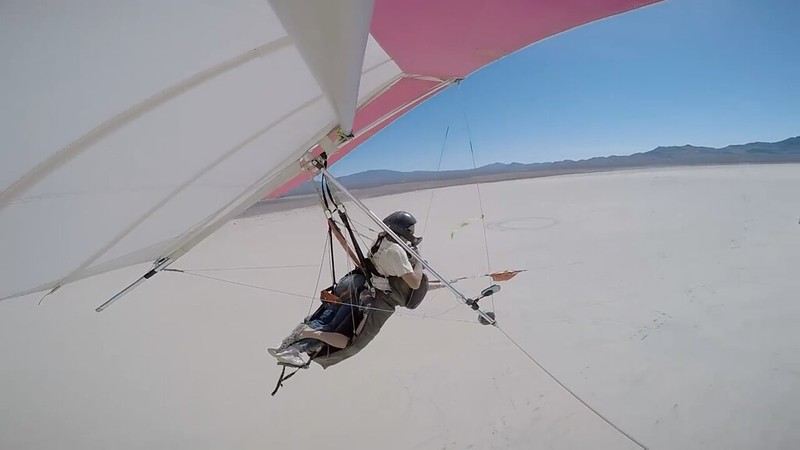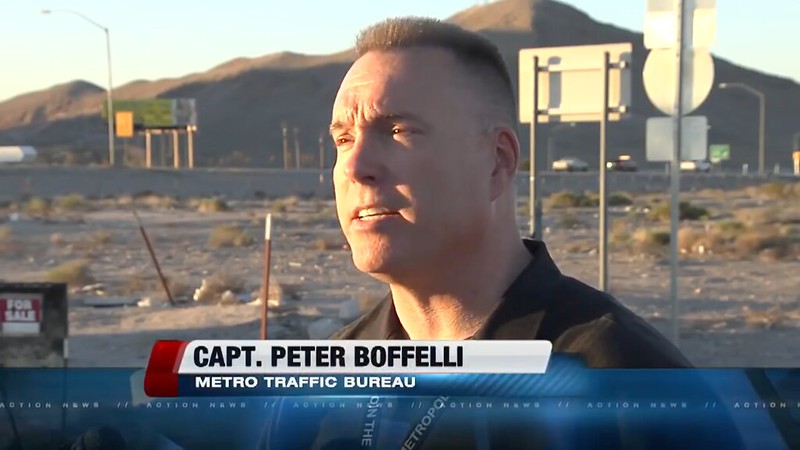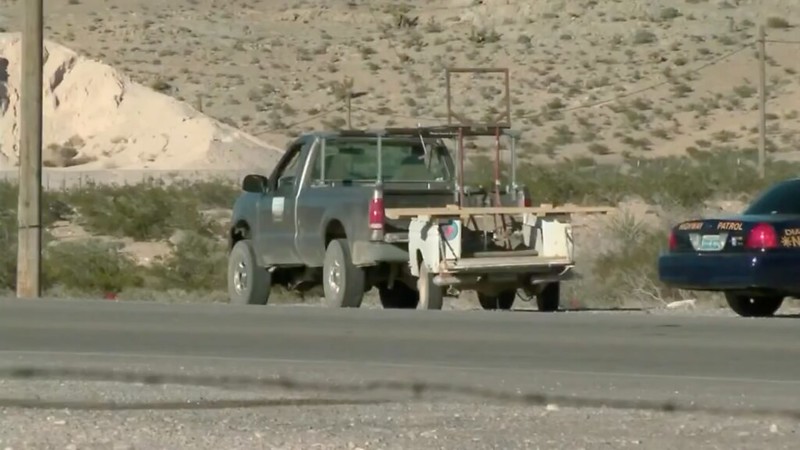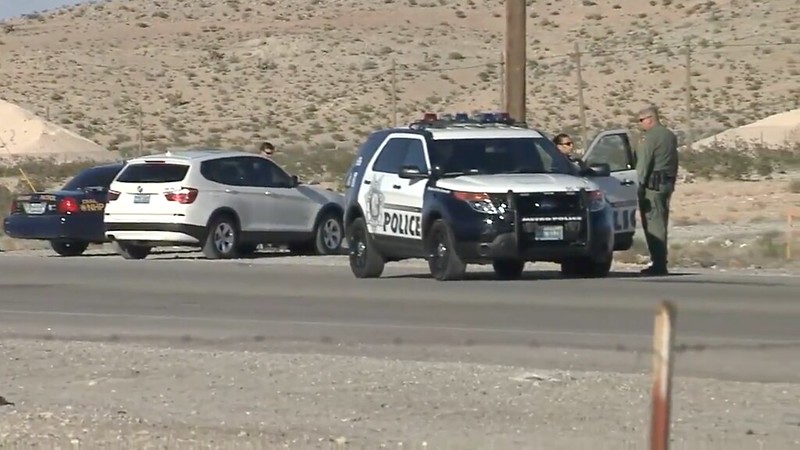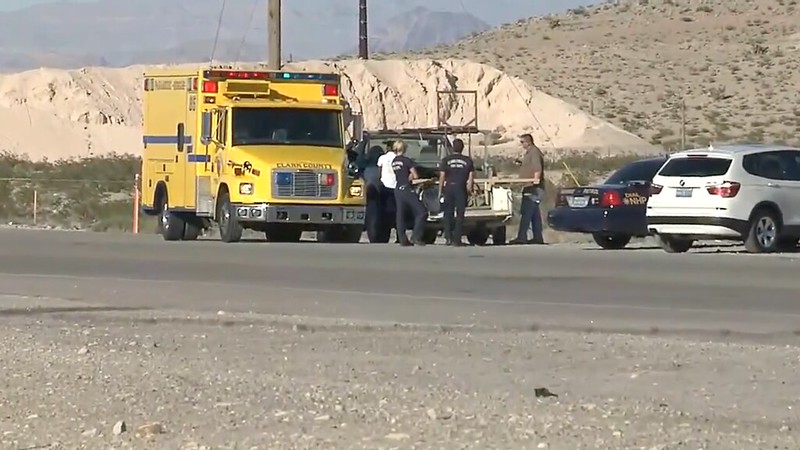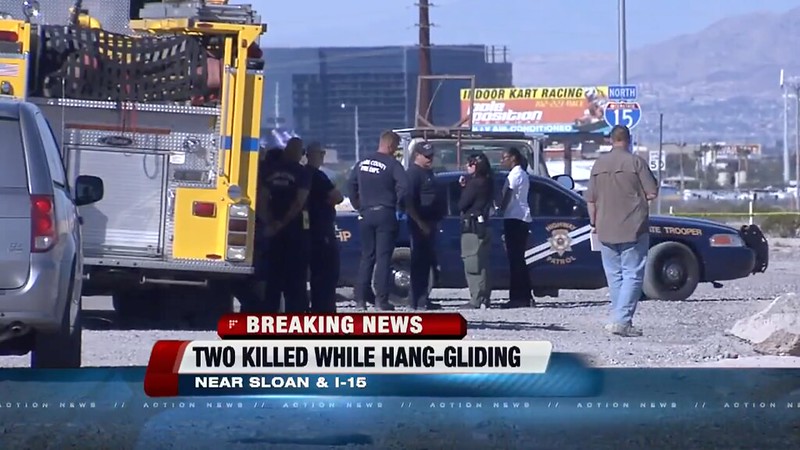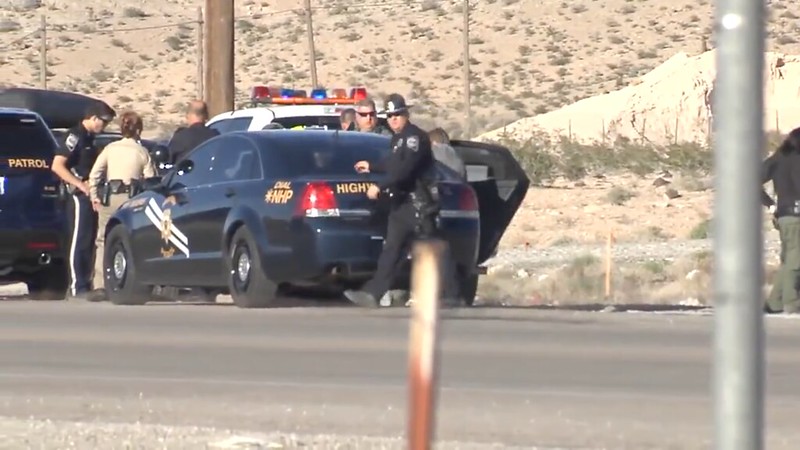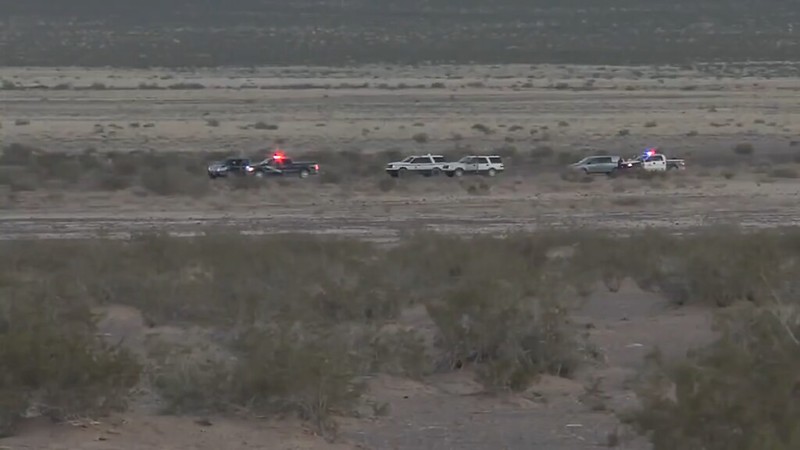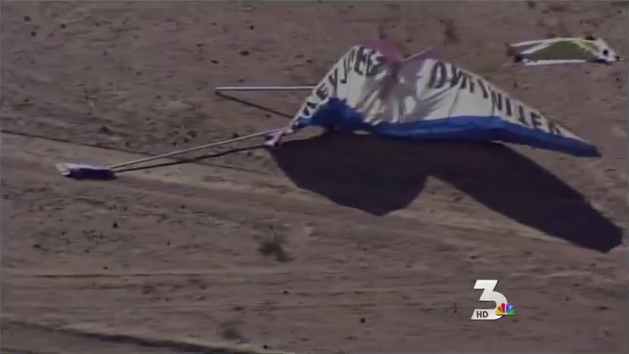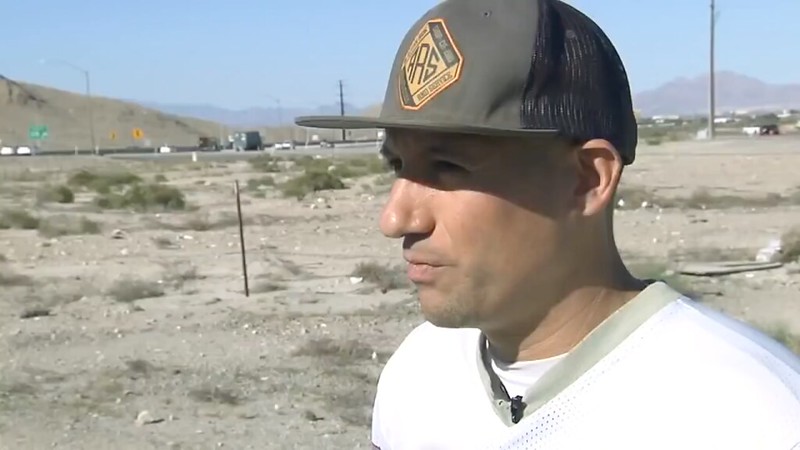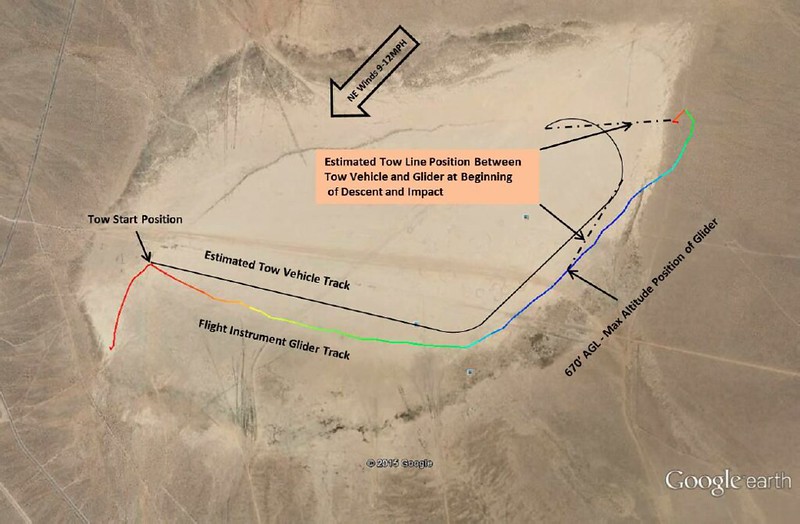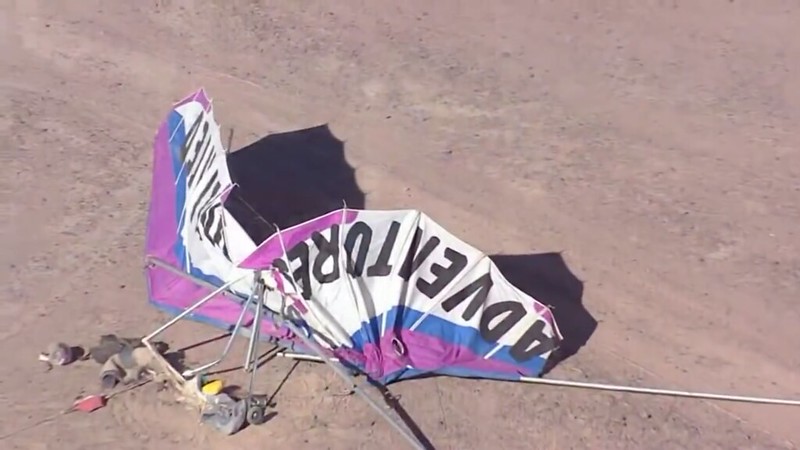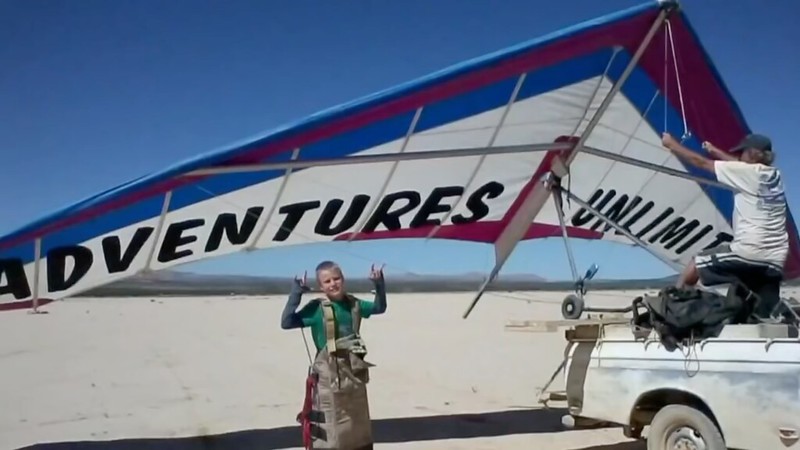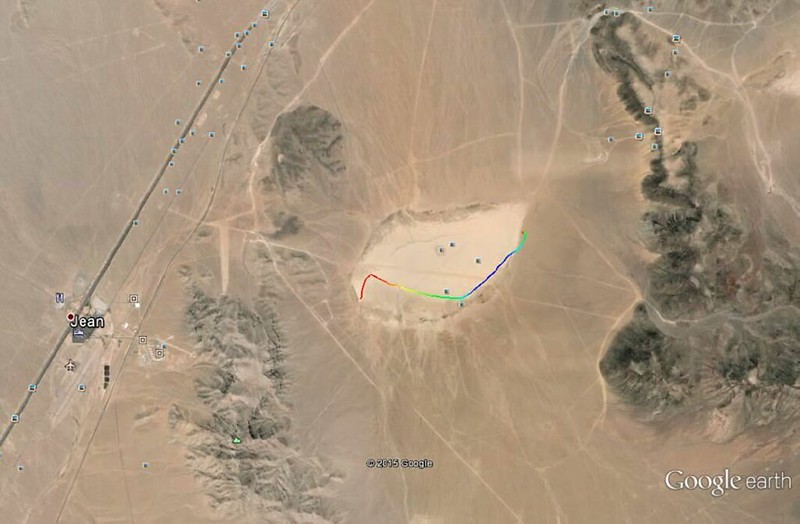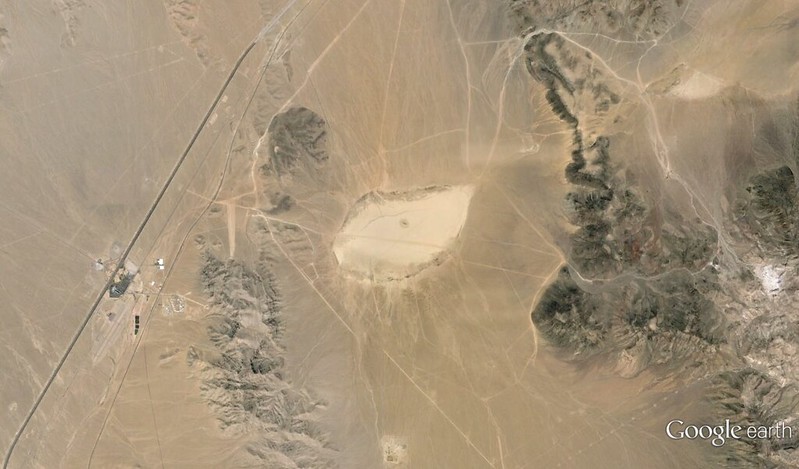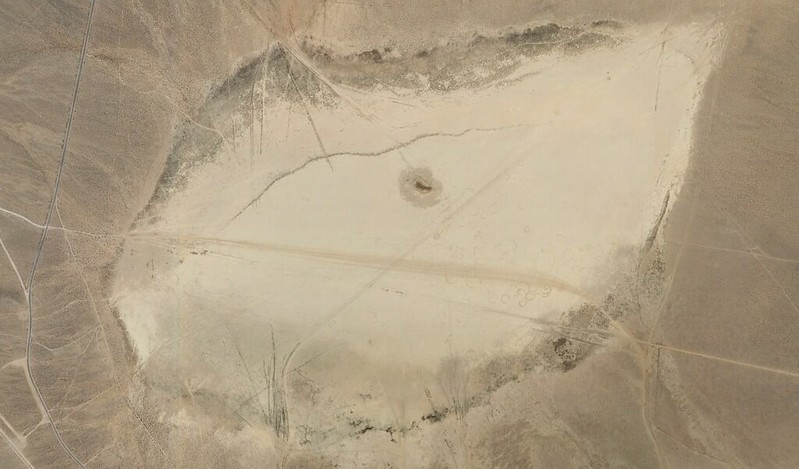Excellent job on that score, Kelly...Jean Dry Lakebed Accident Report and Analysis - 2015/05/11
Post-accident inspection of the release showed the release pin still in place.
You totally eliminated one of the two greatest dangers to a hang glider tow.Manned Kiting
The Basic Handbook of Tow Launched Hang Gliding
Daniel F. Poynter
1974
"The greatest dangers are a rope break or a premature release." - Richard Johnson
Oh bullshit. Had this been a TEMPORARY repair it most assuredly wouldn't have stayed in place through all that rapidly increasing towline pressure and two-handed lanyard pulling. This job was done RIGHT. Lifetime warranty material.A temporary repair was in place on the bridle's release pin lanyard arrangement.
So?The release pin was prevented from being retracted by that temporary repair which routed the release pin lanyard in a fashion requiring exceptional force to affect a release.
http://www.hanggliding.org/viewtopic.php?t=21033
barrels release without any tension except weight of rope..
They were high weren't they? 390 feet? Two hundred is generally considered to be about the top of the kill zone.Bart Weghorst - 2011/02/25 19:06:26 UTC
I've had it once where the pin had bent inside the barrel from excessive tow force. My weaklink was still intact. The tug pilot's weaklink broke so I had the rope. I had to use two hands to get the pin out of the barrel.
No stress because I was high.
InspectorS plural. No single individual was able to pry this thing open by himself under negligible tension. Pity Kelly apparently didn't think to ask his eleven year old skydiving student for a li'l help.Inspectors on the ground were able to activate the release following the accident only by the application of exceptional force.
In what kind of shape did the inspectors find the typical two loop / four strand weak link for tandem surface tow operations properly installed and positioned between the tow bridle and the tow line? Was it still OK or did it look a bit stressed out and likely to break inconsistently in turbulence such that it needed to be replaced with a new one before the next member of the Moorhead-Schneider family was able to go up for his or her skydiving lesson? (When a student breaks or stresses out a weak link does he get charged for the replacement cost and labor?)
It was in a sheath? Oh, right. You just told us the tandem instructor had a hook knife in a sheath on the right downtube next to the flight instrument. Sorry, I wasn't paying attention. Please continue.Although the tandem instructor had a hook knife in a sheath on the right downtube next to the flight instrument, no effort was made to obtain the knife. It did not appear that the tandem instructor was in an attitude where it would have been possible for him to extract the knife from its sheath...
Name somebody who's EVER been in an attitude where it would have been possible for him to extract the knife from its sheath and get to a position to cut the towline bridle - as opposed to the reflex bridle - once a lockout has fully developed, or started to develop, or started to appear on the distant horizon. Only a tiny fraction of these assholes are able to complete the easy reach to their primary releases. Motherfuckers....and get to a position to cut the tow line bridle once the lockout fully developed.
How 'bout the eleven year old skydiving student? I'd have certainly thunk he'd have also had a parachute.Although the tandem instructor had a parachute...
Or the PARAchute you just mentioned a moment ago....no effort was made to throw the chute;
Go figure....it appeared that the instructor's focus during the lockout was exclusively on activating the release.
So although the tandem instructor had a hook knife in a sheath on the right downtube next to the flight instrument, no effort was made to obtain the knife and it did not appear that the tandem instructor was in an attitude where it would have been possible for him to extract the knife from its sheath and get to a position to cut the tow line bridle once the lockout fully developed. And although the tandem instructor had a parachute, no effort was made to throw the chute as it appeared that the instructor's focus during the lockout was exclusively on activating the release.
So where was the Push-To-Talk Button? Apparently had no problem engaging in idle chatter during the three minutes when the glider was going up. He had nine seconds worth of terrorizing vertical lockout preceded by fifty-three seconds of his glider going the wrong way at a moderate descent rate in which a freewheeled winch would've made this a nonevent.
- Didn't appear that the tandem instructor was in an attitude where it would have been possible for him to request the truck driver who served both as the driver and winch operator, with control over the tow pressure control mechanism from inside the cab of the tow vehicle to control the tow pressure in a more appropriate manner?
- No effort was made to push the Push-To-Talk button as it appeared that the instructor's focus during the lockout was exclusively on activating the release?
But let's make real sure we don't talk about the radio too much. We've only got two options here: either the tandem instructor was too focused to use it or the truck driver who served both as the driver and winch operator, with control over the tow pressure control mechanism from inside the cab of the tow vehicle failed to respond to it. And neither of those is very good.Bill Bryden - 1998/12
Unfortunately, we suffered a fatal towing accident earlier this year but only recently received some details about it. Richard Graham, and advanced pilot with 24 years of experience, was fatally injured in a towing accident on May 15, 1998 near Grover, Colorado.
Rich was platform-launch towing in strong (25-30 mph) winds crossing 35-40 degrees to the tow road. Thermal activity was also reported as moderately strong. The launch sequence commenced with the "go to cruise" command, and the glider cleared the tow vehicle. Approximately 300-400 feet of line unspooled, and according to the data memory in the vario the glider reached about 80-90 feet AGL. The pilot then radioed to the vehicle driver to stop, and a few seconds later the VOX on his radio transmitted the words, "Oh no." The glider impacted in a steep nose-down attitude and then inverted.
It is suspected that no attempt was made by Rich to release since the towline was still attached after impact, and the release and winch were determined to be functioning properly before and after the accident. The event was not witnessed directly so it is unknown precisely what happened. It is suspected that the very strong and crossing conditions were a primary factor in this accident.
COMMENTARY
After this accident and other similar towing accidents and incidents, a common reaction by many pilots is to question why the weak link did not break. Too often the discussion evolves into questioning the breaking strength of the weak link and suggesting that weak links with lower breaking thresholds be used.
I was recently told about a platform-launch towing incident a close friend experienced of which I was not aware. He launched and was quickly turned away from the towline. This progressed to a lockout, crashing the glider into soft ground which spared the pilot serious injury. When asked why he hadn't released, the pilot commented, "I thought the weak link would break!" For those unaware, a weak link is very simply a device, typically a loop of string, added to the tow system that is intended to break in the event that towline tensions exceed a safe or desired threshold, thus freeing the glider from the towline.
